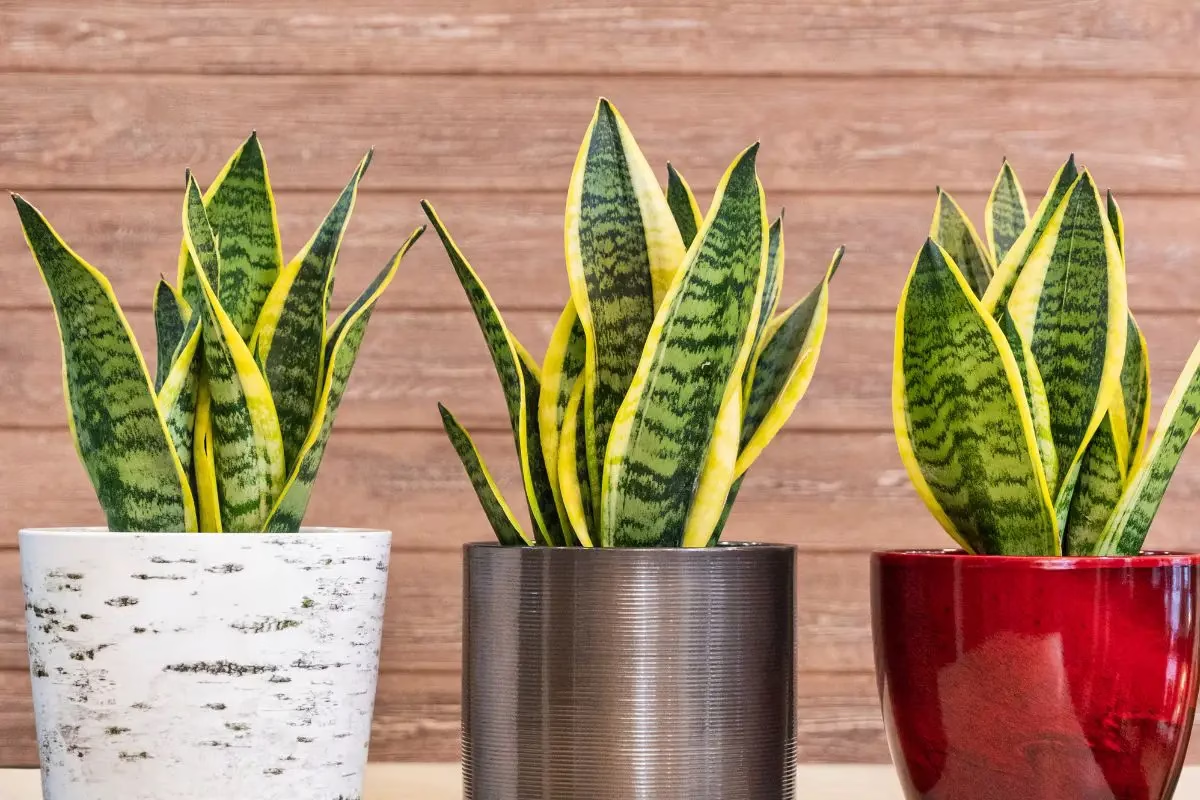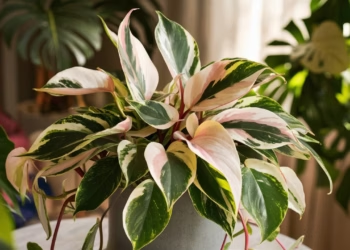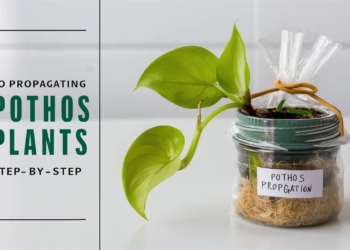Ah, the snake plant! The unsung hero of houseplants, quietly purifying the air while adding a touch of green elegance to any space. If you’ve found yourself in the delightful dilemma of wanting to nurture one of these resilient beauties, you’re in for a treat. Snake plant care isn’t just a chore; it’s a journey, a voyage into the heart of horticulture. So, buckle up, fellow plant enthusiasts, as we embark on the ultimate snake plant care: Care & Growing Guide!
About Snake Plants
Snake plants, scientifically known as ‘sansevieria,’ boast various monikers such as mother-in-law’s tongues, viper’s bowstring hemp, or tiger’s tail orchids. Originating from western and southern Africa, these stunning succulents can also be found in more tropical climates like Florida and Hawaii.
Each type of snake plant has its unique characteristics. For instance, Zey stands out with distinctive tiger stripes and height, while Mikey is more compact, perfect for shelves or desks. Apollo, a rare gem, is as easy to care for as Susie, a versatile snake plant available in various sizes.

Choosing the Perfect Pot: A Home for Your Serpent Companion
Choosing a pot for your snake plant might sound like a no-brainer, but trust us, it’s more than just an aesthetic decision. The pot plays a crucial role in the overall well-being of your green amigo. Here’s the lowdown on finding the perfect home:
Size Matters:
When it comes to snake plant pots, bigger isn’t always better. These resilient creatures prefer a snug fit, so opt for a pot that’s 1-2 inches larger in diameter than the current one. This prevents waterlogging and encourages healthy root development.
Drainage Dance:
Snake plants hate having wet feet, so make sure your pot has drainage holes. It’s like giving them a pair of stylish, breathable shoes – they’ll thank you for it!
Material Maven:
Choosing the right material for your pot can make a world of difference. Terracotta pots are excellent for moisture control, while plastic pots retain moisture for longer. Consider your watering habits and the plant’s preferences when making this crucial decision.

Finding the Ideal Temperature
Maintaining a warm environment is key to your snake plant’s happiness. Follow these guidelines:
- Keep your snake plant in a warm spot, ideally above 10°C.
- Shield it from drafty windows during winter.
- Avoid placing the plant in humid conditions, as they prefer a dry atmosphere.
Light, Camera, Action! How much light do snake plants need
Your snake plant may not be a diva, but it sure has its preferences when it comes to lighting. Forget the spotlight; it craves the subtle dance of shadows and sunlight. Let’s shed some light on the matter:
Low Light Lover:
Snake plants are the introverts of the plant world, thriving in low to medium light conditions. However, they can tolerate bright, indirect light as well. Just don’t make them stand in the scorching sun for hours – that’s a recipe for crispy leaves! Avoid locking them away in a windowless room for extended periods. The lighter and brighter the environment, the happier your snake plant will be.
Rotate, Rotate, Rotate:
To keep your snake plant’s growth balanced, give it a quarter turn every few weeks. This ensures all sides receive an equal dose of sunlight, preventing the plant from leaning towards the light source like a botanical sunflower.
Finale Light Tip: Tender Loving Care
Wipe the leaves gently with a clean, damp cloth to remove dust and debris, allowing the plant to breathe freely and absorb light.
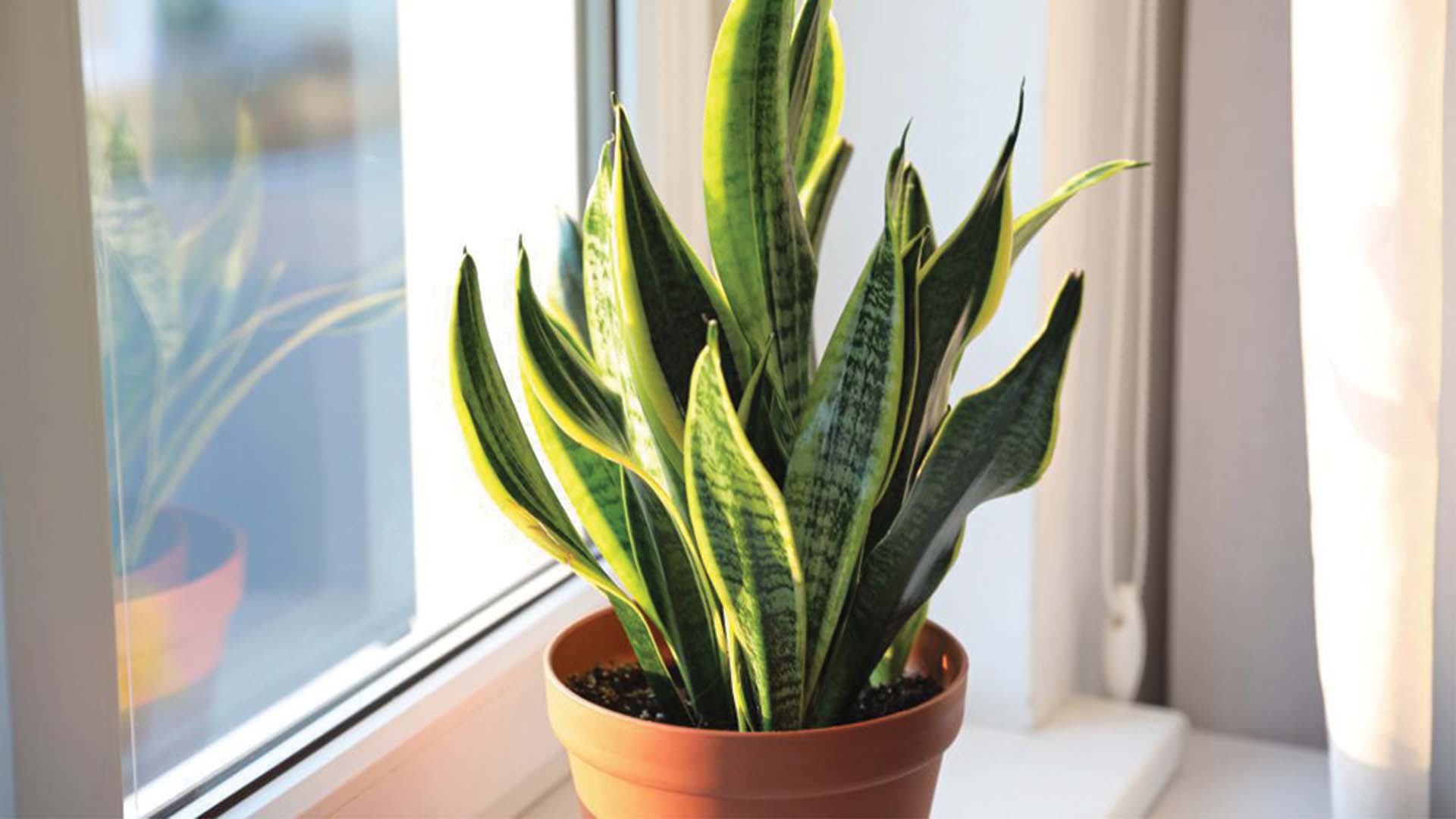
Watering Wisdom: Drown or Drought? Finding the Right Balance
Ah, the perpetual struggle of houseplant enthusiasts – to water or not to water? With snake plants, it’s all about finding that elusive balance between drowning and drought. Let’s decode the watering conundrum:
Drought-Defying Dynamo
Snake plants are desert dwellers at heart, so they’re no strangers to drought. Water fortnightly or allow the soil to dry out completely between waterings to prevent root rot, and when you do water, do it with gusto. But beware – overwatering is the ultimate snake plant sin!
Adjust watering frequency based on the size of your snake plant, with larger ones requiring more water.
Winter Water Woes
During the winter months, snake plants go into hibernation mode. Scale back on the watering frequency, giving them a break to recharge for the upcoming growing season. It’s like sending your green buddy on a tropical vacation – minus the suntan lotion.

Soil Secrets: The Perfect Blend for Snake Plant Bliss
Your snake plant’s success story starts from the ground up – quite literally. The right soil mix can make all the difference in providing the ideal foundation for your green companion. Let’s dig into the soil secrets:
Fast-Draining Delight:
Snake plants detest soggy soil, so opt for a well-draining mix. A cactus or succulent soil blend works wonders, providing the perfect balance of aeration and moisture retention. Say goodbye to waterlogged woes!
Go Easy on the Fertilizer:
Snake plants aren’t voracious eaters, so don’t go overboard with the fertilizer. A diluted, balanced liquid fertilizer once a month during the growing season is more than enough to keep your green amigo satisfied.
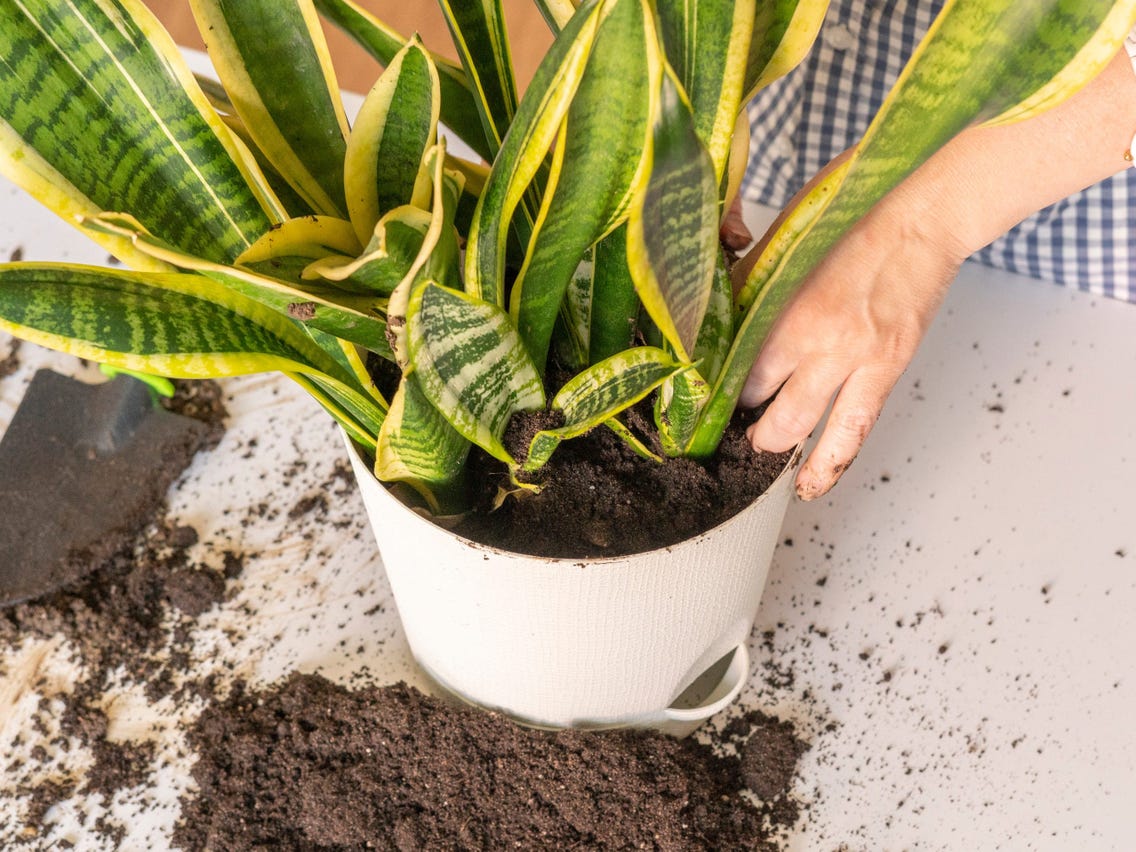
Repotting Wisdom
Snake plants are slow growers, requiring infrequent repotting. Consider the following:
- Keep your snake plant in its original nursery pot unless the roots outgrow it.
- If repotting is necessary, do so in spring, using a specialized houseplant or cactus compost.
- Ensure decorative pots are sufficiently heavy to prevent toppling, especially for tall snake plant varieties.
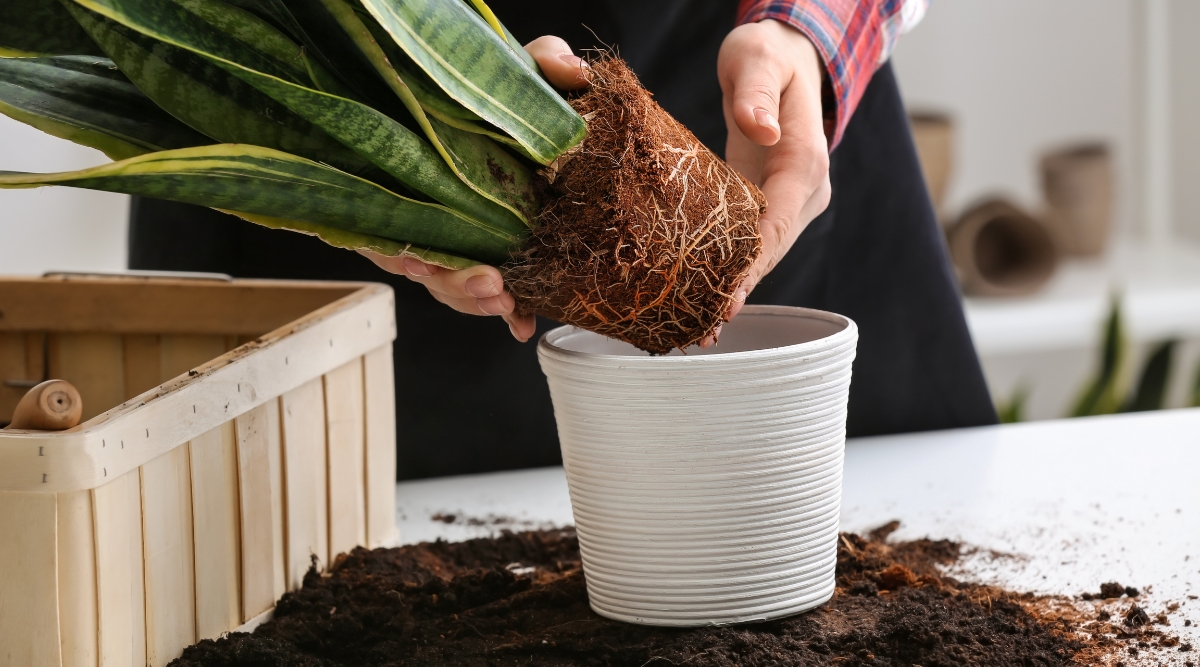
Troubleshooting Tango: Dealing with Common Snake Plant Snags
Even the most seasoned plant parents encounter a few bumps on the botanical road. Fear not, for we’ve compiled a troubleshooting tango to help you navigate through the twists and turns of snake plant care:
Yellowing Leaves:
If your snake plant’s leaves are turning yellow, it might be a sign of overwatering. Check the soil moisture and adjust your watering schedule accordingly. Remember, a little neglect is often the key to a thriving snake plant!
Soggy Soil Blues:
Is the soil perpetually damp? You might need to repot your snake plant into a well-draining mix. Let it breathe and bid farewell to the soggy soil blues.
Pests:
Even the toughest plants fall victim to pesky invaders. Keep an eye out for spider mites and mealybugs. A gentle wipe with a soapy water solution should send these unwelcome guests packing!
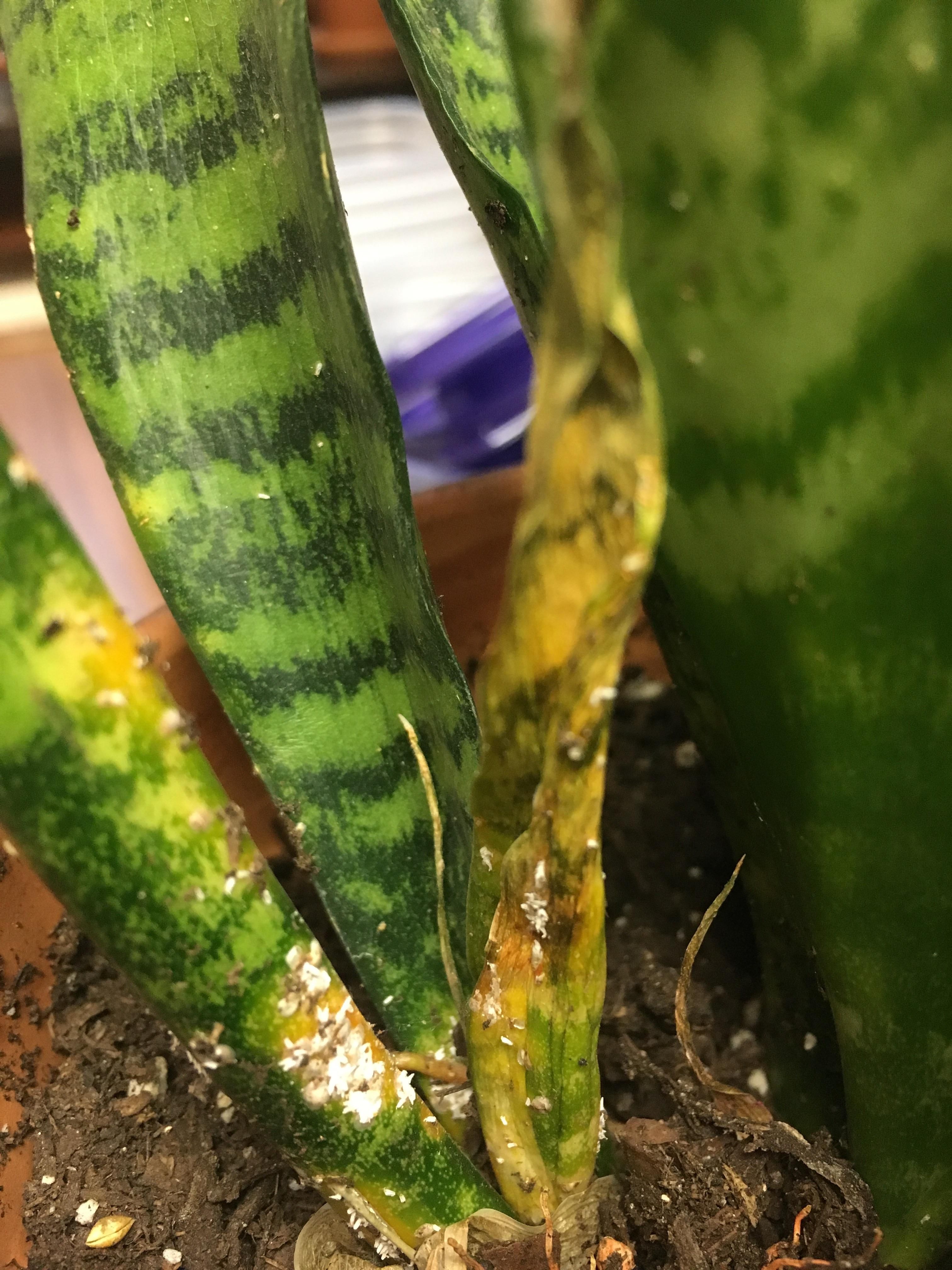
And there you have it, fellow plant enthusiasts – the ultimate snake plant care: Care & Growing Guide! With the right pot, the perfect lighting, a watering routine fit for a desert wanderer, and a troubleshooting tango for those occasional snags, you’re ready to embark on a green thumb’s triumphant journey.
Remember, snake plants aren’t just houseplants; they’re resilient companions, silently purifying the air while adding a touch of nature to your space. So, embrace the journey, revel in the growth, and watch your snake plant flourish under your care. Happy planting, and may your green thumb thrive as much as your snake plant!
FAQs
Do snake plants need sunlight?
Snake plants (Sansevieria) are adaptable to different light conditions, and they can tolerate low light. While they can survive in low light, they will thrive and grow better in indirect, bright light. However, they should be protected from direct sunlight, as it can scorch their leaves.
How do you care for a snake plant indoors?
- Light: Provide bright, indirect light for optimal growth, but snake plants can tolerate low light conditions.
- Watering: Allow the soil to dry out between waterings. Snake plants are drought-tolerant, and overwatering can lead to root rot.
- Soil: Use well-draining soil to prevent waterlogging.
- Temperature: They prefer temperatures between 70-90°F (21-32°C) but can tolerate lower temperatures.
- Humidity: Snake plants are adaptable to different humidity levels.
- Fertilization: Feed sparingly during the growing season (spring and summer) with a balanced liquid fertilizer.
How often do you water a snake plant?
Water your snake plant when the top inch or two of the soil feels dry. Allow the soil to dry out between waterings, and be cautious not to overwater, as snake plants are susceptible to root rot.
Do snake plants like rain?
Snake plants are native to arid regions of West Africa and are adapted to survive in dry conditions. While they can tolerate occasional rain, they do not require it and can thrive in environments with less rainfall.
How do I know if my snake plant is healthy?
Signs of a healthy snake plant include:
- Upright and Firm Leaves: The leaves should stand upright, not drooping.
- Green Color: Vibrant green leaves indicate good health.
- No Yellowing or Browning: Yellow or brown leaves may indicate overwatering or insufficient light.
- New Growth: The appearance of new shoots or leaves is a positive sign.
How do I make my snake plant happy?
To keep your snake plant happy:
- Provide Adequate Light: Place it in bright, indirect light.
- Avoid Overwatering: Allow the soil to dry out between waterings.
- Use Well-Draining Soil: Ensure the potting mix allows excess water to drain freely.
- Avoid Direct Sunlight: Protect it from intense, direct sunlight, which can scorch the leaves.
- Moderate Fertilization: Feed sparingly during the growing season with a balanced fertilizer.
- Regular Checks: Monitor the plant for signs of pests, diseases, or any changes in appearance.
